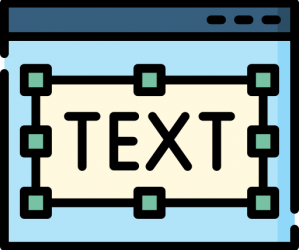For this task, I decided to write and narrate a short poem: “What’s in my bag, you ask?”
Original image from Task 1:

What’s in my bag, you ask?
What’s in my bag, you ask?
A few knicks, a few knacks,
And yes, the quintessential mask.
A written word,
A fading receipt.
A little bit of me,
in every item I see.
An earring with a broken clasp,
A tome of a novel I just cant grasp.
The drama, intrigue and baggage I carry around,
Oh! And did I mention that absolutely random piece of wire I found?
A little bit of me,
in every item I see.
Some candies, chocolates, credit cards to pay.
A pair of sunglasses in case Vancouver sees a sunny day?
What’s in my bag you ask?
A ton of memories in which I bask.
A pen grabbed at a hotel’s front desk,
a reminder of a family vacation, a good time;
A dollop of sanitizer and a coffee gift card,
Well, now doesn’t this finally rhyme?
For you see, a little bit of me,
In every item I see.
A rouge, a lipstick,
Things of vanity.
A several hundred years down the line;
Perhaps an archaeologist will find this bag of mine;
And unravel its secrets,
like threads of twine;
And find in it contents,
Clues to a simpler time.
Reflection:
For this task, the semiotic mode I decided to go with was auditory—something I have never done before. I decided to redesign the first task from a visual mode to an aural exercise by conveying the information I originally included in Task 1 in the form of a poem. I am not a writer, but I enjoyed writing this simple yet heartfelt poem. I was surprised to see how a visual and text-heavy task can be transformed by a simple poem coupled with background music. It also made me realize that indeed all text is multimodal (Kress, 2005) and that from a multiliteracies point of view, one can adopt a more holistic approach that includes both the formal and the informal in the process of meaning-making (NLG, 1996).
“Any successful theory of pedagogy must be based on views about how the human mind works in society and classrooms as well as about the nature of teaching and learning” (NLG, 1996, pg. 82). I could relate this statement to the learning theory of Constructivism, wherein meaning making happens in bits and pieces through cognitive and social developments. This meaning can also be constructed by presenting text, which is multimodal, through digital means (NLG, 1996) because knowledge creation is a product of social and cultural constructions.
This exercise was challenging, because it was difficult for me to grasp initially what was required exactly. However, as I progressed through the task, I was able to connect this to the example of “Transformed Practice” (NLG, 1996, pg. 83), in the sense that I was able to recreate the meaning or redesign this task of meaning in a different context. At the heart of learning is motivation. While doing this task, I realized that I was able to express myself better through a poem as opposed to taking a picture and writing about the items. Because I had the freedom to choose the way I wanted to learn, I was more motivated to learn. As an educator, I was able to connect this to the concept of “Situated Practice” (NLG, 1996, pg. 85), as it further reaffirmed my belief that a learner’s affective and sociocultural need must be accounted for and guided learning experiences must be created to enable the same.
While this task is mainly auditory, there are elements of gestural design as I tried to use background music to create a certain feeling or affect. The task compelled me to take the information from Task 1–an Available Design, design it in a different mode, and to create something which transformed me as a learner by enhancing my meaning-making process and redesigning it in a completely different and unique way (Cope & Kalantzis, 2009, pg. 175).
*I created this short audio clip using Camtasia and the royalty-free music “Inspiring Piano” is courtesy Purple Planet.
References:
Cope, B. & Kalantzis, M. (2009). Multiliteracies: New literacies, new learning. Pedagogies: An International Journal, 4:3, 164-195, DOI:10.1080/15544800903076044
Kress (2005), Gains and losses: New forms of texts, knowledge, and learning. Computers and Composition, Vol. 2(1), 5-22.
The New London Group. (1996). A pedagogy of multiliteracies: Designing social futures. Harvard Educational Review 66(1), 60-92


Hi Manize!
I really enjoyed your Task #1 makeover! I loved how you turned your original entry into several modes and included your original post’s image as prior knowledge for the reader. I linked to your post. Here is the link if you’d like to take a look:)
https://blogs.ubc.ca/etec540jenniferr/link-6/
Manize, I enjoyed hearing the melody of your voice and your wonderful poem!!! I’ve been exploring the mode-bending tasks of others, and there are so many different approaches that share so much more about the creator than the original task. Your take is magical.
I agree wholeheartedly with your statement: “Because I had the freedom to choose the way I wanted to learn, I was more motivated to learn.” and have found it to ring true in my own practice as an educator and even more so in my experience as a student. There is beauty in choice and being able to throw oneself and passion into the work.
Hi Mel,
I am so glad you enjoyed my poem. Thank you for listening to it and for sharing your thoughts. 🙂
To be honest, I am always a bit conscious when recording my voice, (I always get too critical, and it just feels weird to listen to your own voice!) but I felt it would go well with this task. I agree with you–tasks 1 and 7 have revealed so much about the creators and serve as excellent introductory activities!
All the best for the rest of your course.
Manize